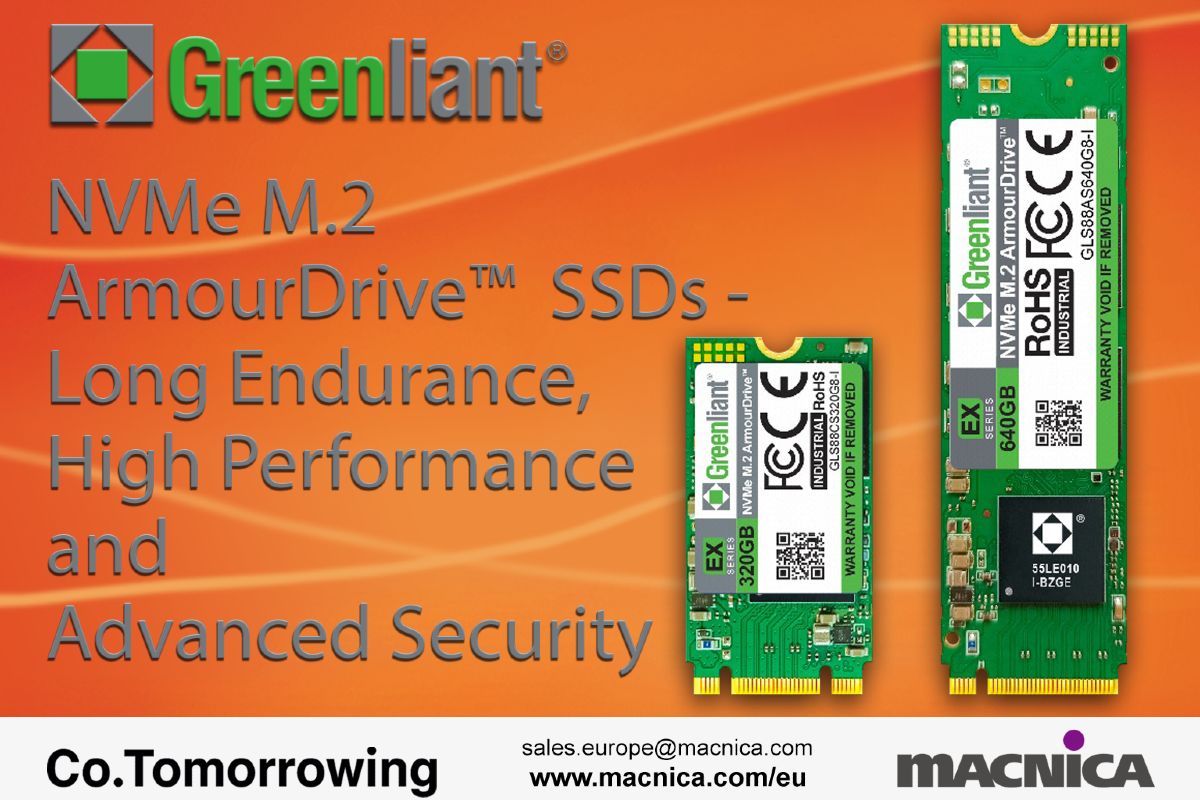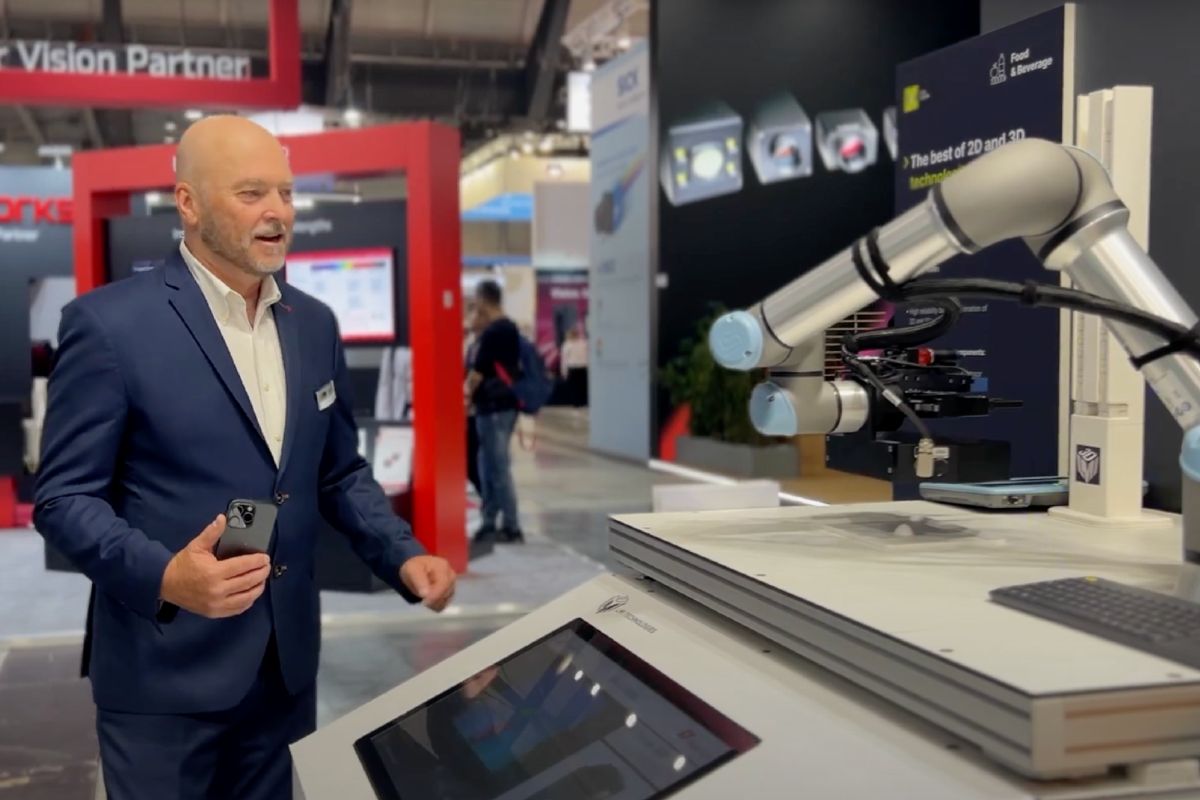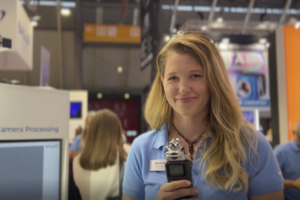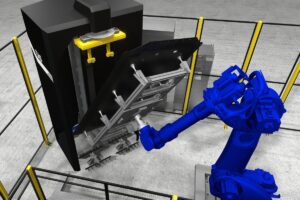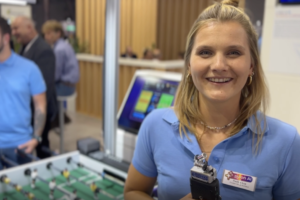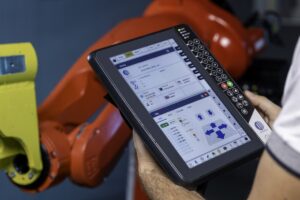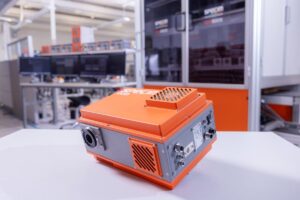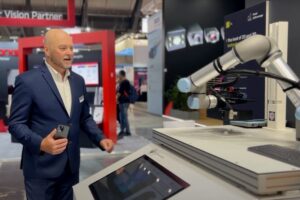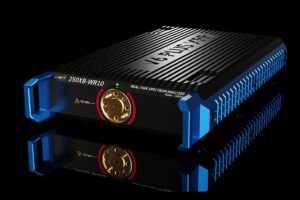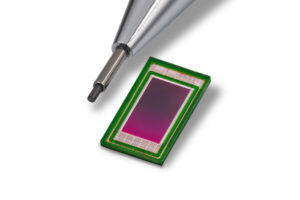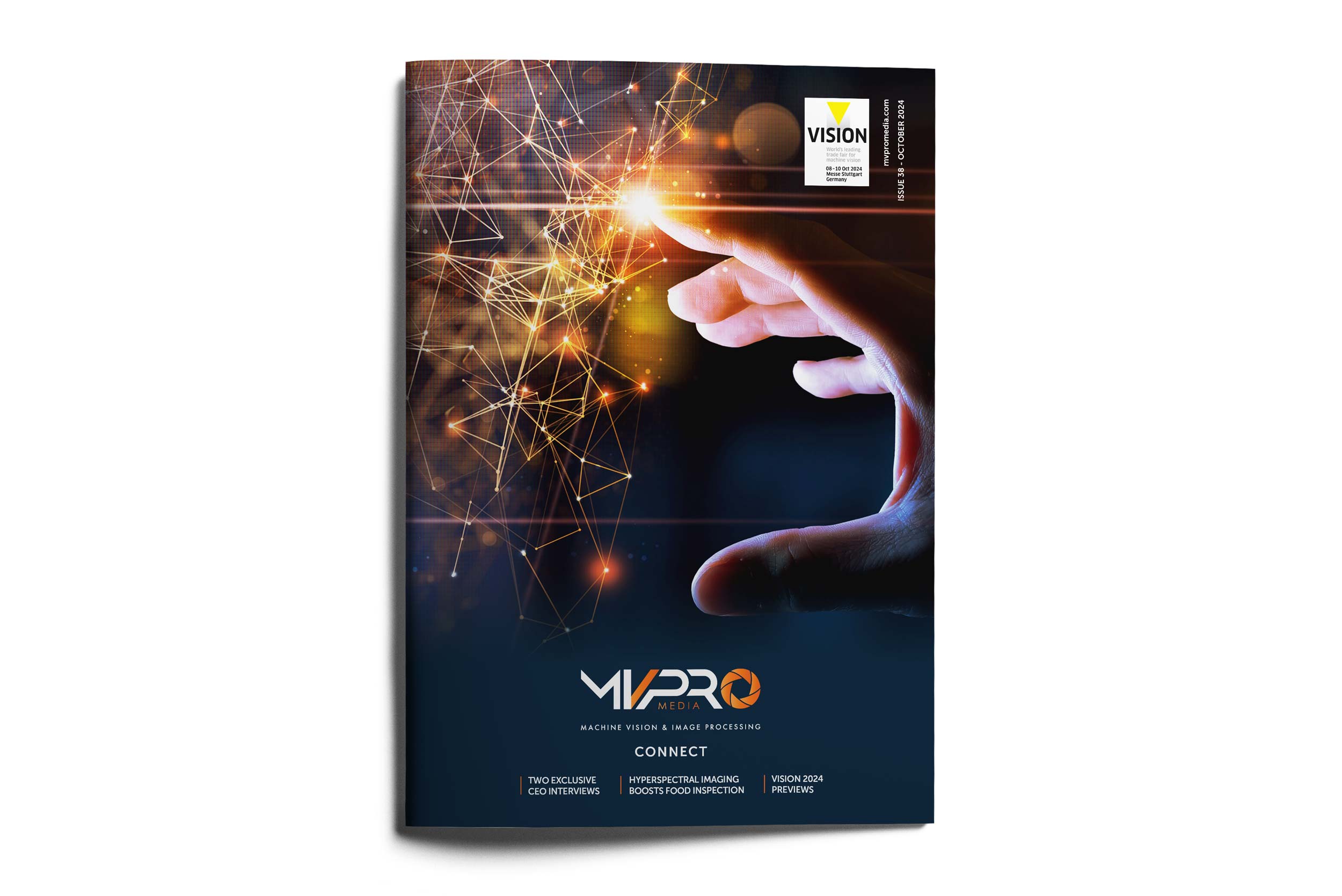iENSO is a North American provider of embedded vision solutions for product companies looking to turn their products into embedded vision devices. Automate Pro Europe’s editor, Joel Davies, spoke with iENSO’s President, Sebastien Dignard, about their upcoming embedded vision platform launch and the embedded vision market.
Could you introduce yourself and iENSO?
I’m Sebastian Dignard. I’ve been with iENSO for two years, but have been in the imaging industry for a little over sixteen years. Since 2003, iENSO has been a company that has grown and really honed its craft in pure embedded vision. When you hear people speak about embedded vision, they usually mean cameras integrated into another product. For example, an oven with an integrated camera, or a refrigerator. The camera is there to enhance the user experience, add functionality, and ultimately gather and process data.
Traditionally, the vision industry has been focused on continually enhancing picture quality. For us, the focus is on the data. The image we capture is only as “good” as is required by the AI algorithm that processes and interprets the image. The output of the algorithm is what our customers are looking for.
What type of customers are you working with?
There was a study that found that eighty-seven per cent of consumer product companies worldwide have stated that they’re looking to deploy some sort of computer vision. They know they need to deploy computer vision, or embedded vision, because it’s all about data mining, with data worth more than oil today. And, of course, the number one source of data is visual in nature.
Here’s the key that really defines the iENSO moment: only ten per cent of that group of companies have actually deployed some sort of computer or machine vision. Ninety per cent of those companies that know they need to deploy imaging don’t know how to do it. It takes decades to develop the know-how, experience and understanding of imaging and vision technologies to design and integrate a complete solution, even with all the parts at hand. We have that experience and we are able to offer it to our customers. So, what we do is develop an end-to-end embedded vision solution where our customers start with their product and receive vision data that they can then use to make decisions.
Why do you offer your platform as a service?
That’s a very good question. There are several terms out there that have been coined at different times by different industries. Embedded vision, computer vision, machine vision, Internet of Things are some of those terms. We actually see these terms converging in the future to encompass systems that see, or sense, what is around them, gather the data, and then use this data to make decisions. That converged space is our speciality. When we started developing our embedded vision offering, we saw that there isn’t a clear-cut term in the industry that defines what we have to offer. So, we made our own: Embedded Vision Platform as a Service (EVPaaS).
The name Embedded Vision Platform as a Service is new and was born because we saw that there were no terms in the industry that could define what we offer. We got tired of trying to fit in with the existing categories, so we made our own. However, the EVPaaS offering is not new for iENSO. It is a culmination of decades of research and development, experience, and IP that we have accumulated in the spheres of image capture, image processing, AI, cloud connectivity, cybersecurity, and much more. Now, we offer an end-to-end solution that combines all these parts into a whole.
What are some of the solutions you provide?
EVPaaS is a solution created for companies that want to turn their products into vision data devices in order to open up their innovation possibilities. These companies are embedding a vision component into their products for a range of reasons, from customer experience to enhanced functionality, to research and development, to data monetization. We make the solution that lets them do that. That is the “whole”.
The embedded vision platform can be considered as two “parts”: what happens in the product, or the device, and what happens in the cloud.
The device is a camera embedded in anything – for example, a helmet, a dishwasher, a thermostat, or a drone. This camera has all the image acquisition components required by the application as well as edge processing with AI algorithms right on the device. We offer a range of sensor boards from the best imaging companies out there, including Sony, onsemi, and OmniVision. These are integrated with a processing board, from a company like Ambarella to make sure that we have the ability to not only process the image, but have a roadmap to properly mine and process the data at the edge. Once the image is captured and processed, the most efficient-possible package is sent to the iENSO cloud.
The cloud platform is there for further processing, analytics, and storage. There can be an additional layer of decision-making AI for the moments of interest sent from each camera or data processing at the aggregate level for multiple cameras. There is a layer of security and data privacy that protects the data on the device, in the cloud, as well as in transit between the two. Our customer, the product company, can access the data and analytics on the iENSO cloud. They can choose to give their end-users direct access as well, where we white-label the access app and add a branded skin and desired functionality.
Our solution delivers the image, extracts the data needed, processes it either locally or in the cloud, and then we give you the data. You, the product company, own it and decide what to do next and how to extract the value as per the application.
In what kind of areas are you applying your solutions?
It really depends on the company as well as on the application. For example, consider a home appliance, such as a dishwasher or refrigerator, or oven. The manufacturers of these appliances have research and development departments that continually improve the appliance. But, there are only so many ways you can wash dishes or keep food fresh. The path of innovation narrows over time and they are left competing on price. When they come to us, they are opening up unprecedented possibilities for their products as well as their business model. With EVPaaS, they can see and understand what their products see and take the resulting smart appliances much further than they could before. Suddenly, many paths are open to them, such as:
If their oven is always burning the roast, or their dishwasher is always leaving pots dirty, the manufacturers can take that to their research and development departments. The aggregate anonymized data of how their products are being used can be very powerful.
Once you embed a connected camera into a home appliance or any consumer product, that brings many opportunities for enhancing the customer experience. For example, customers can check on their roast from their smartphone, or they can even share a timelapse video with their dinner guests. They can check what’s in the fridge while they’re at the grocery store, or get an automatic personalized reminder. They can see who’s ringing the doorbell and press a button to unlock the door. With our solution, they can also access historical moments of interest from their online account and review historical usage. And we could talk for an entire day about how these devices will eventually fit into the future “Zero Click Economy” being conceived by companies like Amazon and Google.
With the examples above, you can see how a slightly more advanced AI algorithm can analyze some of those situations and make decisions right on the appliance. For example, depending on the type of dishes that were loaded in the dishwasher, the appliance can decide which setting is more appropriate and will also conserve water. The oven can warn you of a burning roast. The doorbell can recognize a stranger versus your family at the door. All of this ties into a more efficient home and that even feeds directly into our priorities on consumption and global warming and emissions.
With all of the above, manufacturers of products are able to pivot from a product company to a recurring revenue company. The additional services that come with data can become so valuable that the monthly subscription to access these services can compete with, or even surpass, the one-time revenue from the sale of the product itself.
All these are ways of drawing out the value from the vision data, of monetizing that data. And they are not out of reach for any product company that works with us – the company doesn’t need an advanced engineering department, or a cloud services department, or knowledge of imaging technologies. All they need is their idea, their vision.
Does iENSO specialize in a certain type of product or vertical?
We don’t specialize in a specific vertical and work with customers with applications as diverse as precision farming, security, home automation, robotics, IoT, and sports. The way we achieve success in all these verticals is through a close partnership with each customer. Our customers, the product companies, have a deep understanding of their market and of their end customer’s needs. They are typically already working on algorithms that identify those key moments for their end customers – understanding whether a plant needs more water, whether an intruder at a job site is a human or a deer, whether the blue team or the red team has possession of the football. Although we have add-on services to help our customers optimize these algorithms, we will never be the application experts that they are.
What we bring to the table, is a deep knowledge of vision systems. We ask our customers what image data their decision-making algorithm will need to do its work. Then, we provide that image data at the lowest possible cost, securely and efficiently, pre-processed at the edge and in the cloud. We deliver the moments of interest that the customer’s algorithm actually needs and with the hardware optimized to the very diverse form factors and operating conditions of the product.
We are designing some cameras to operate in darkness, some are installed in an oven, and some need to go inside a human body. You couldn’t imagine more different circumstances than these. But, in the end, it’s always about capturing some kind of visual moment that is needed to make a decision. This is the common element of all the applications.
There are many companies in the embedded vision space. What makes iENSO different?
Everybody’s doing parts. We are doing the whole. Yes, there are many companies out there that are doing great work and achieving excellent results. But all offer a part of the solution. Oftentimes, we actually partner with these companies. But there are no companies that offer the whole solution. Many of our customers first arrive at our door having tried to take the separate parts and create a solution – and failed. Even with the best parts, it is very difficult to make a system that is integrated, efficient, cost-effective and achieves the results that our customers seek. That’s where our platform comes in.
How do you have the expertise and the bandwidth to deliver such a varied solution? A company usually specialises in one certain area or the other.
Let me step back and tell you a little bit about iENSO’s history. Although iENSO is a new brand to many of your readers, if you dig a little deeper, you realise that iENSO has been almost a founding father of true embedded vision. So, whilst a lot of companies are trying to redefine themselves to try to address this new up-and-coming market called embedded vision, iENSO grew up there. Until 2019, we’ve been a relatively unknown company, but we’ve been quietly working with some of the industry’s biggest names and developing this whole concept of maximising the edge, maximising the relationship with the cloud, focusing on the data and the imaging technology that can deliver the best quality data. It’s something that’s been in the works for a very long time and all we’re doing now is being more vocal about it because we’re confident that the market is ready for this.
Although the platform might sound ambitious when presented all at once, it’s actually built on many years of slow research and measured advancement, where we’ve been able to develop the IP required to proceed with the concept and how it’s deployed to our customer base.
How has iENSO dealt with the pandemic and the subsequent shortages?
As they say, “Never let a good crisis go to waste”. Although the pandemic did create a lot of chaos internationally, what it allowed us to do is to work with companies who are trying to innovate. We observed a spike in innovation during the pandemic where there was this general mood of thinking outside the box, looking for different ways. It really shook up the way big companies, as well as small companies, do business and everyone had to get creative. In many cases, that meant working with someone like us.
Now, when it comes to chip and component shortages, there were definitely some challenges and there continue to be challenges. What’s been a real differentiator for us was having our headquarters in North America while also leveraging our presence in Asia. We were able to use those contacts to make sure our customers didn’t feel the shortage or, if they did feel it, it was limited. Because of our forward-thinking business model, we were able to work with some of our key component providers, like Ambarella and Sony, who believed in us and made sure they’d support us through these tough times.
Why have you opened an office in Europe? Why Ukraine, specifically?
The new office that we opened in the fall of this year was somewhat pandemic-influenced. I’m a big believer that your best asset in a company is between the keyboard and the chair – the individual. The pandemic kind of underlined that for us, where we decided we didn’t need to be limited by location and could look for talent where the best talent is. Our headquarters remains in Toronto, Canada, but we opened a new engineering office in Ukraine because that’s where we met a fantastic group of engineers who can really integrate into our team here.
We believe in growing organically and keeping our culture of ingenuity, diligence, and flexibility. We only hire professionals who have advanced skills in imaging technologies and can really move us forward – and there aren’t that many of them out there. However, our size has never been a limiting factor to us because we are a small team that continues to be selected by Fortune 500 and Fortune 100 companies to deploy their embedded vision ideas. This is because our offering is exactly what they’ve been looking for and our team is nimble and fast, adapting to whatever challenges they throw at us. We will be bringing a fresh way of deploying imaging to a broader market segment and continuing to aggressively innovate in both the technology and the business side of embedded vision.
This interview originally appeared in Automate Pro Europe magazine 3. All facts were correct at the time of publication.
You can find more information about iENSO on its website.
Stay up to date with the most recent automation, computer vision, machine vision and robotics news on Automate Pro Europe, CVPro, MVPro and RBPro.



